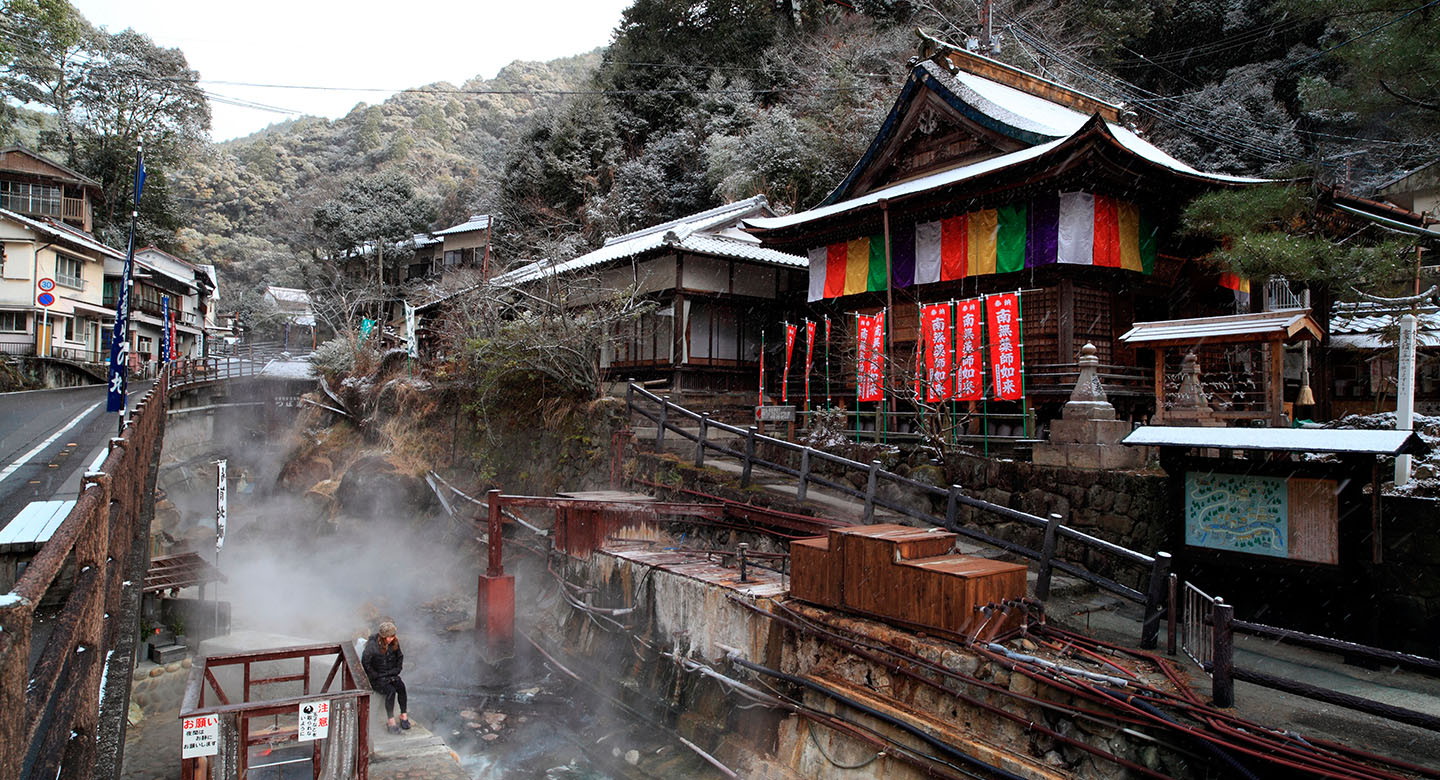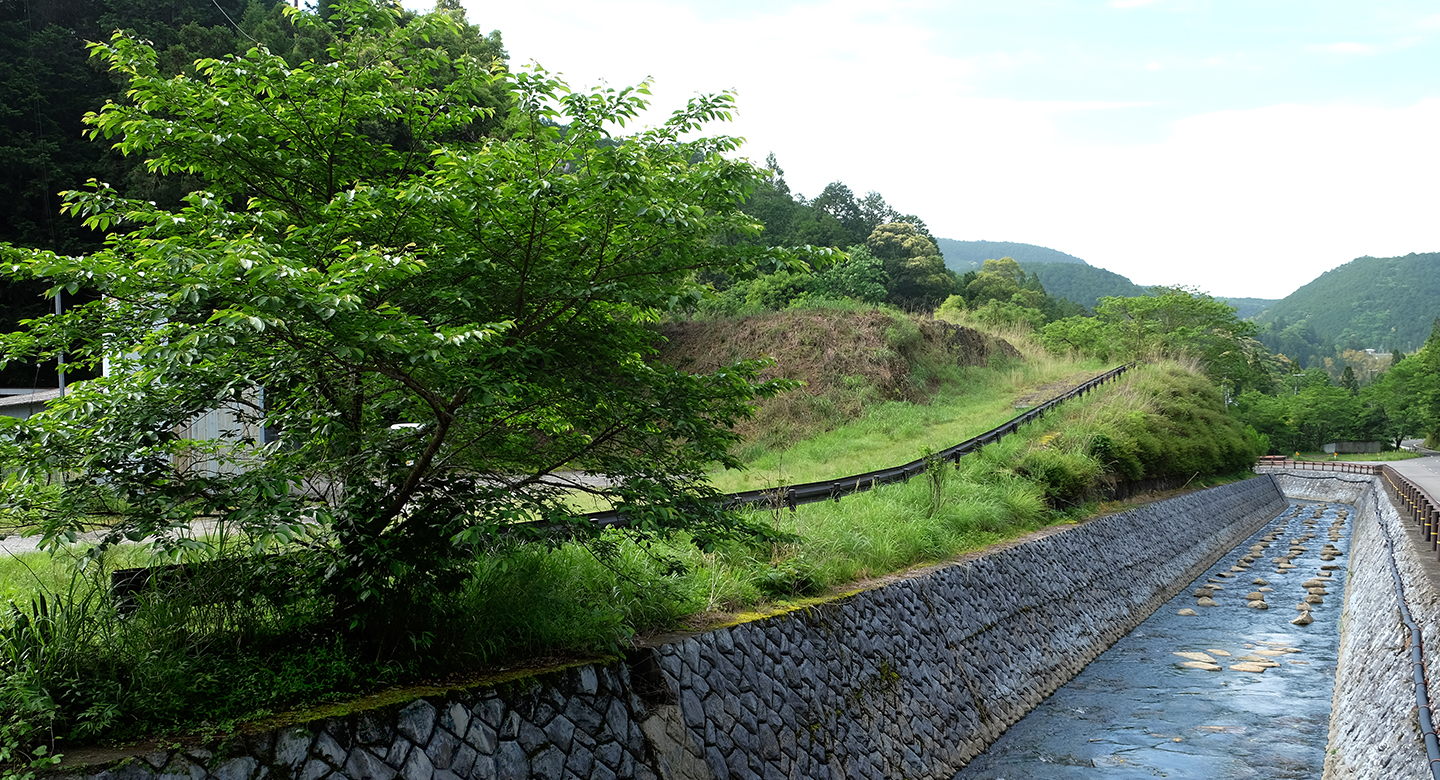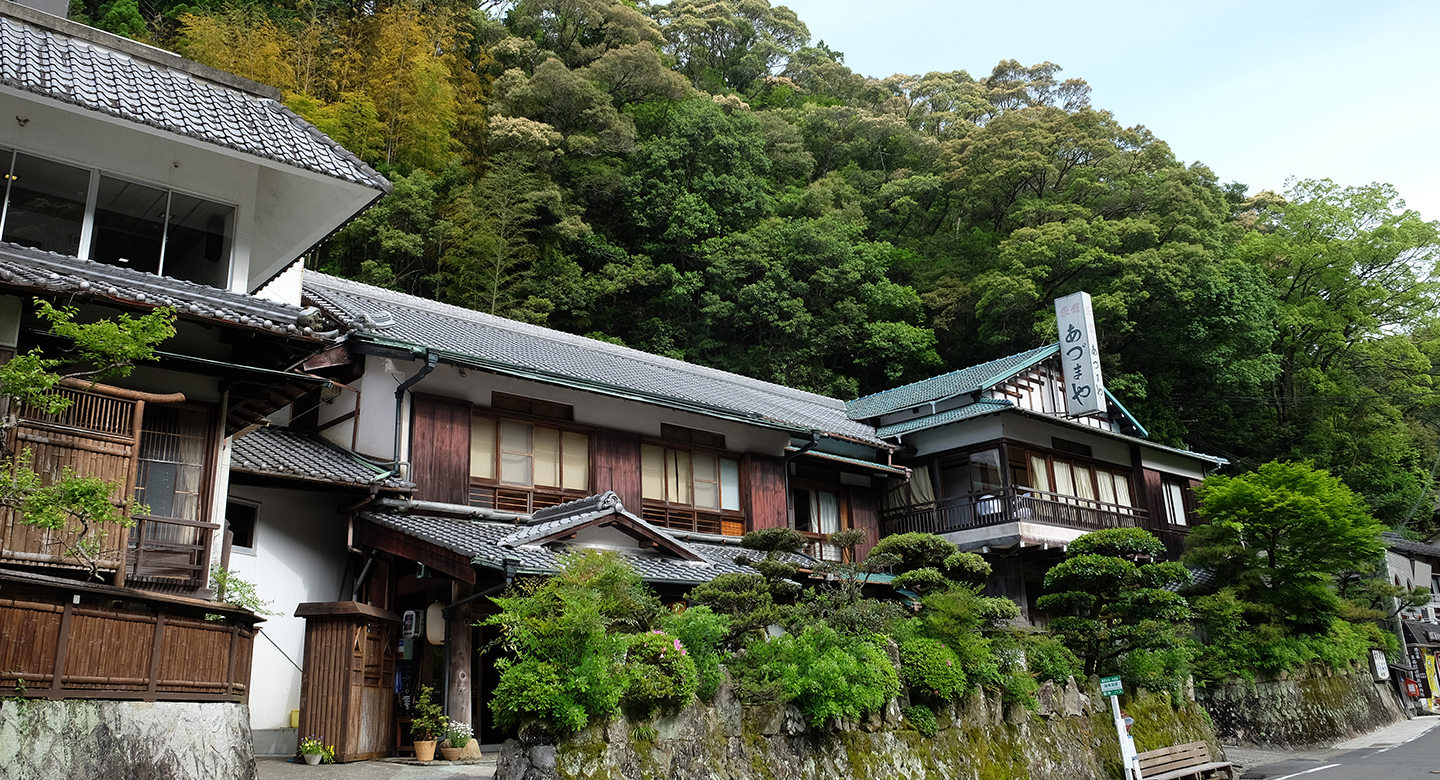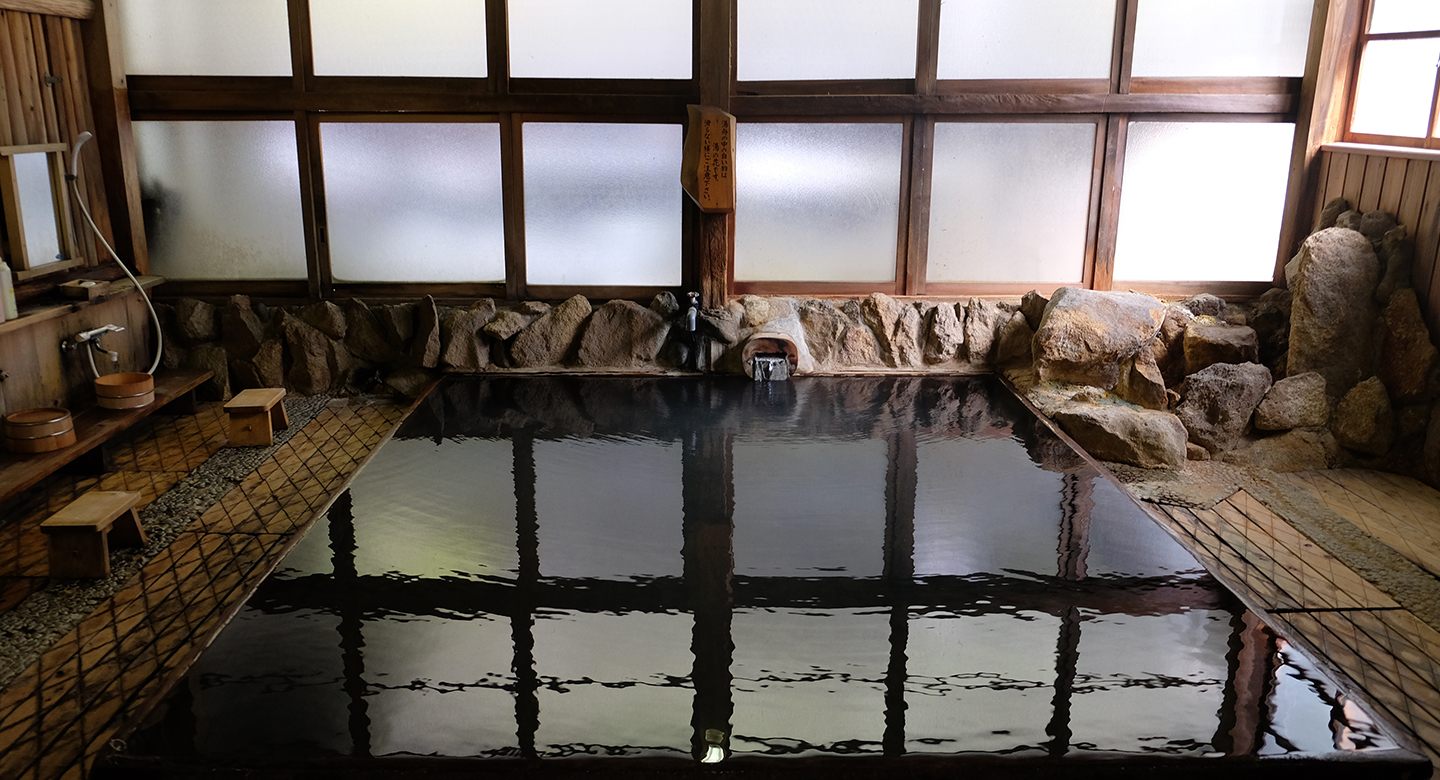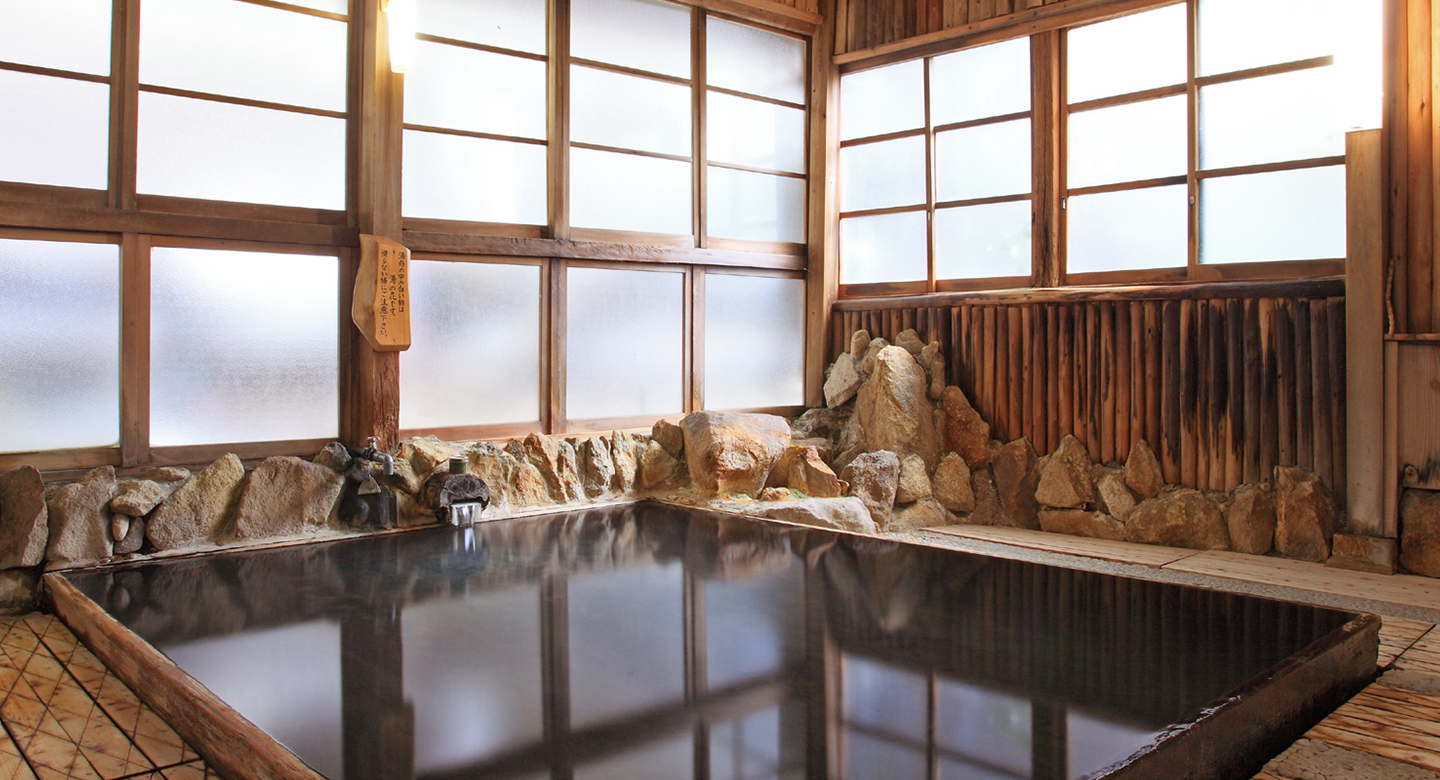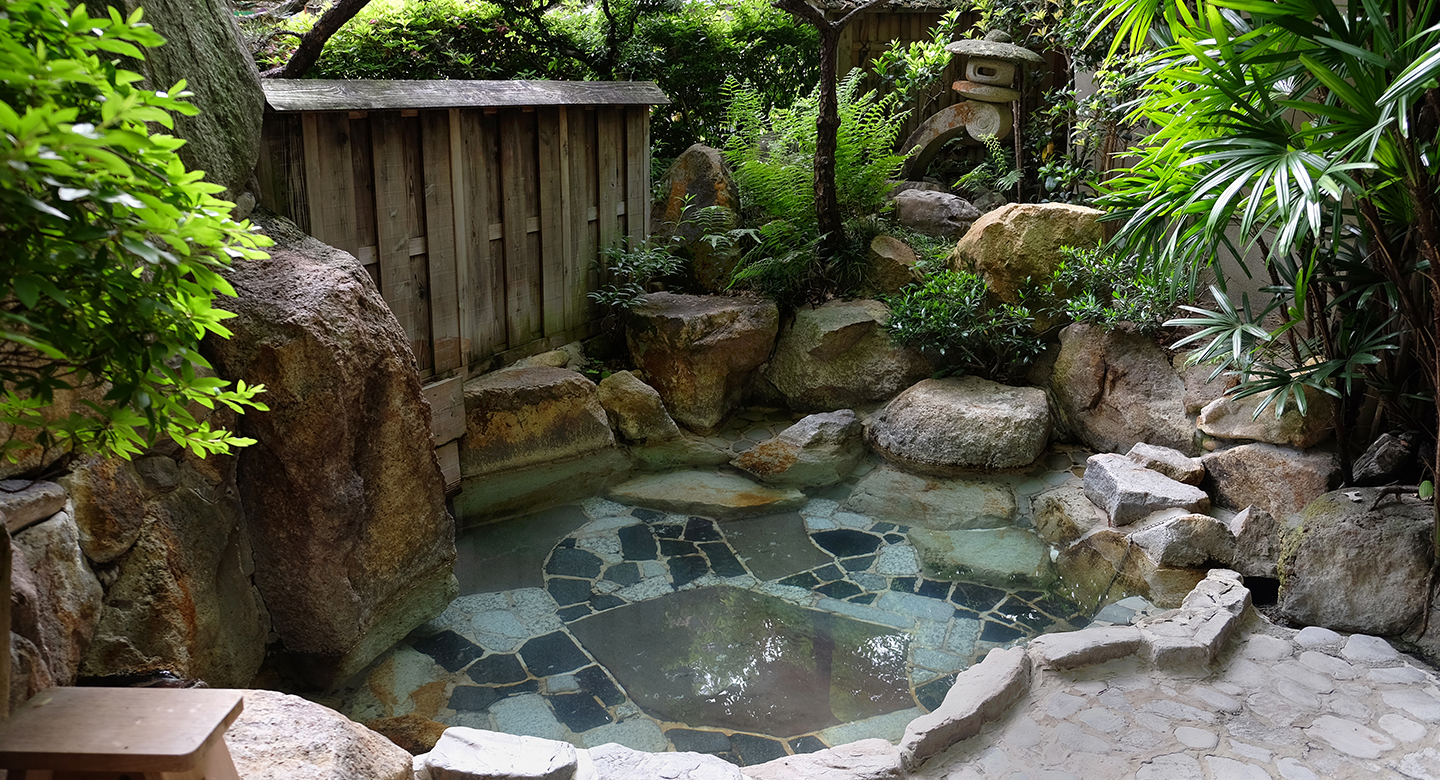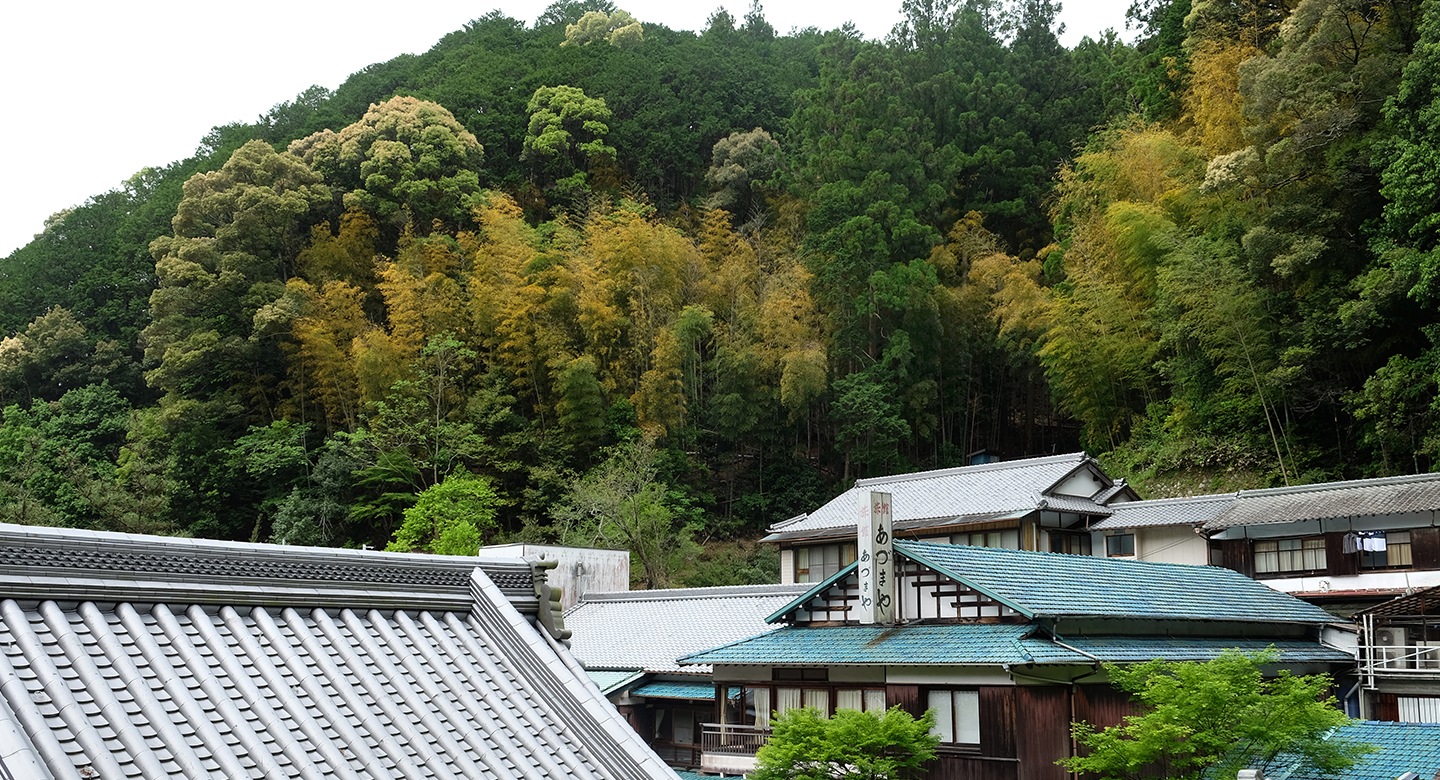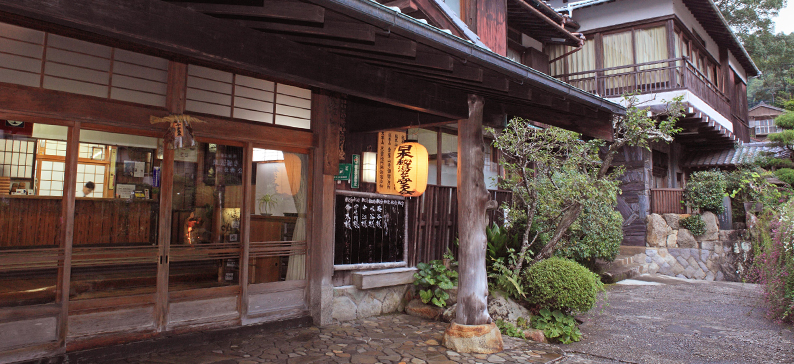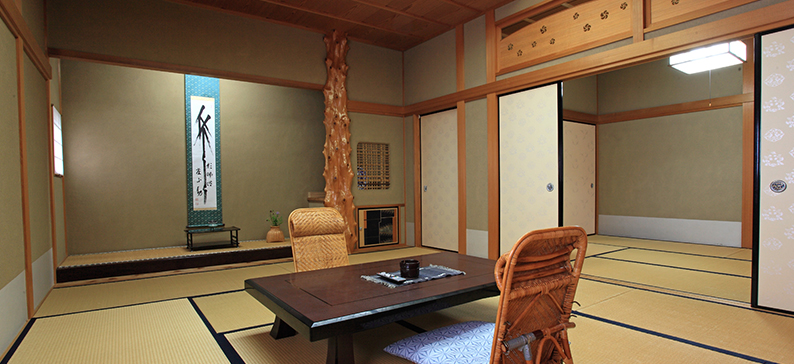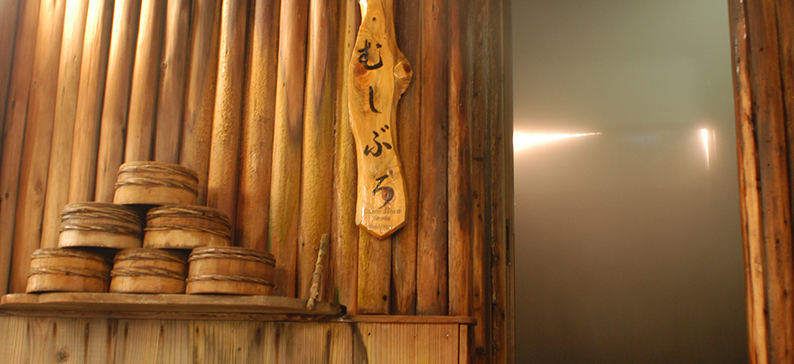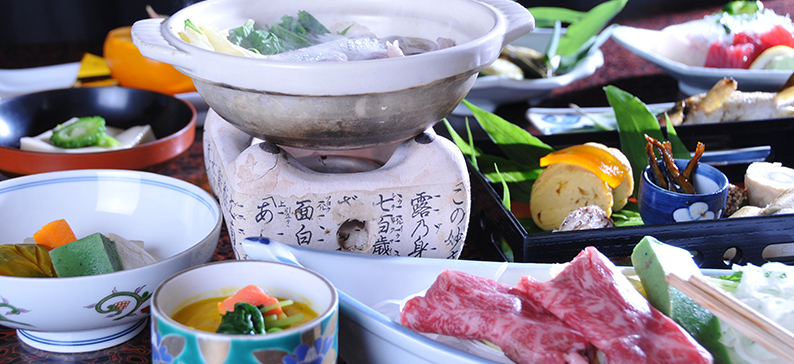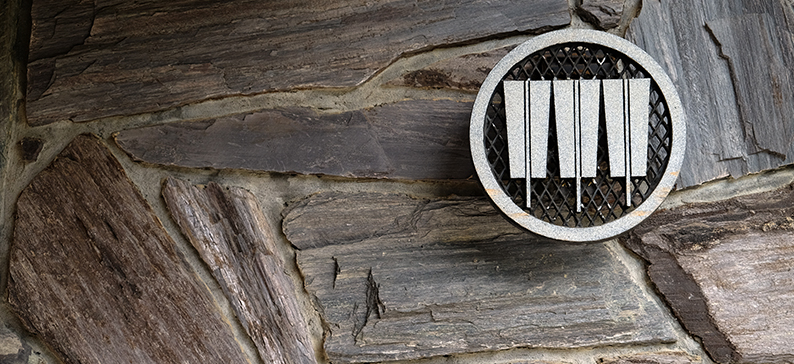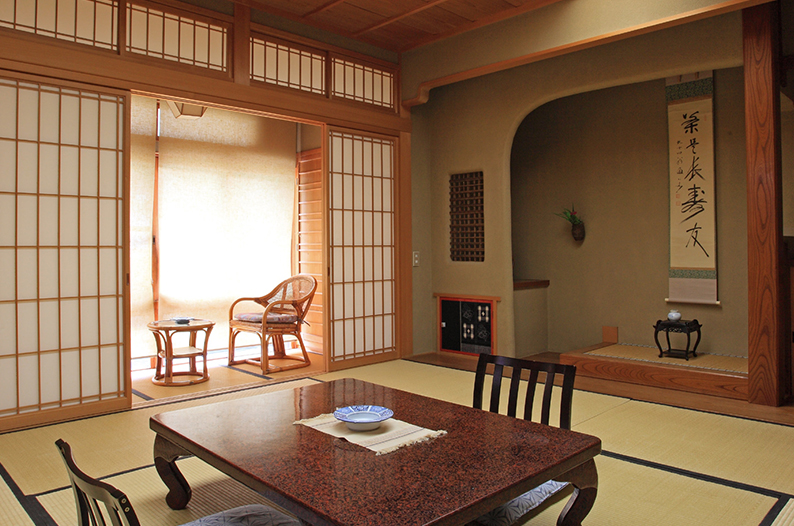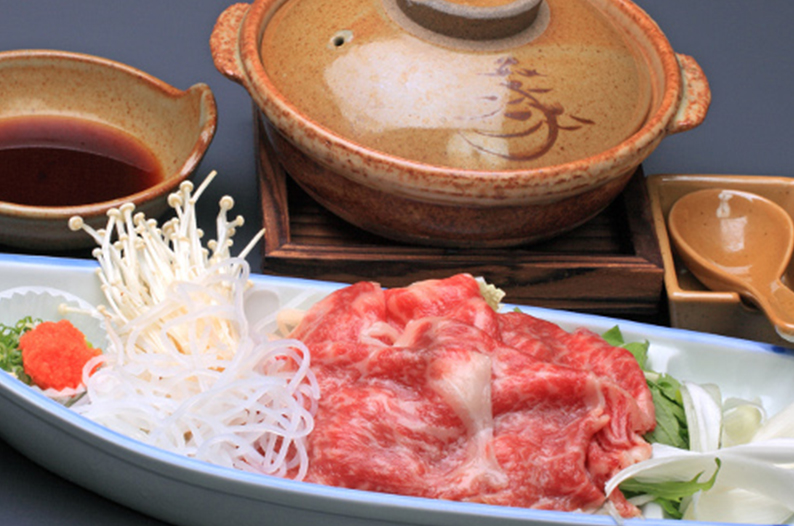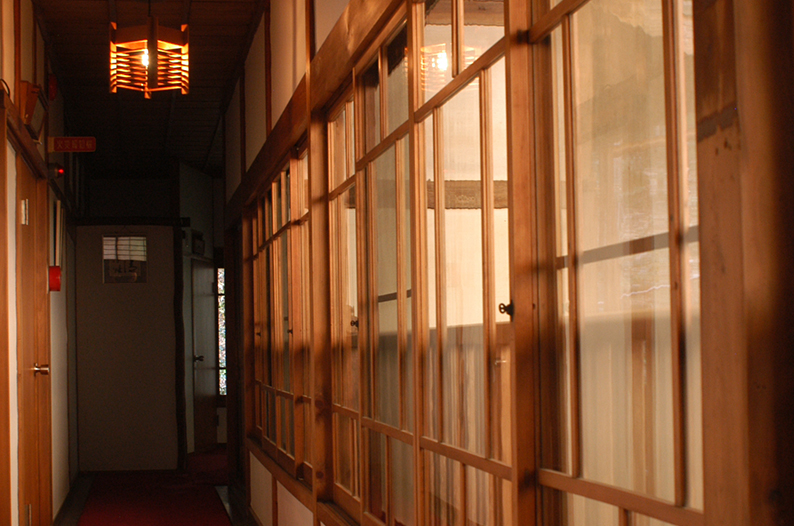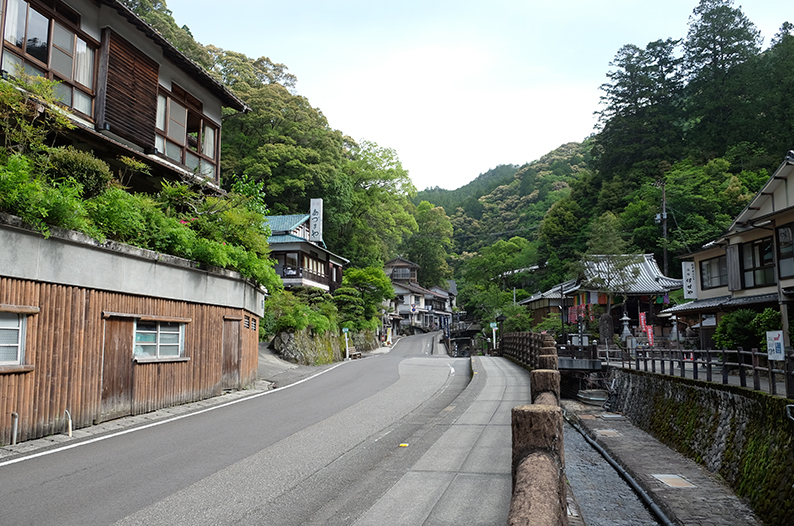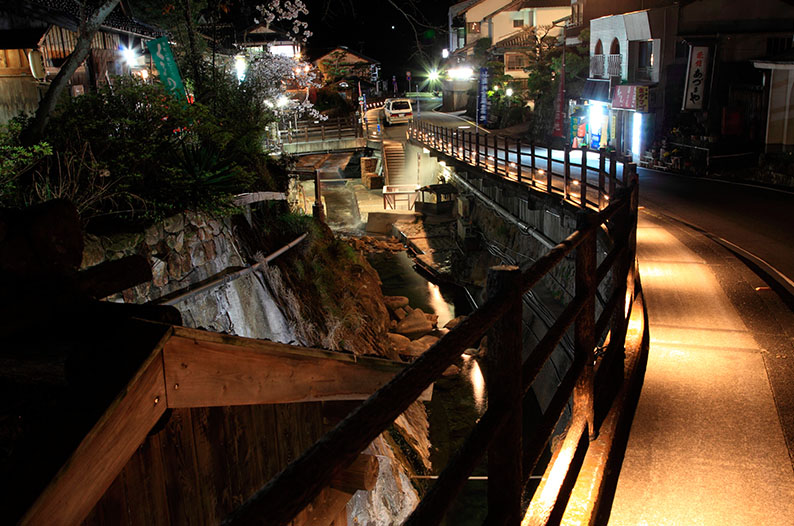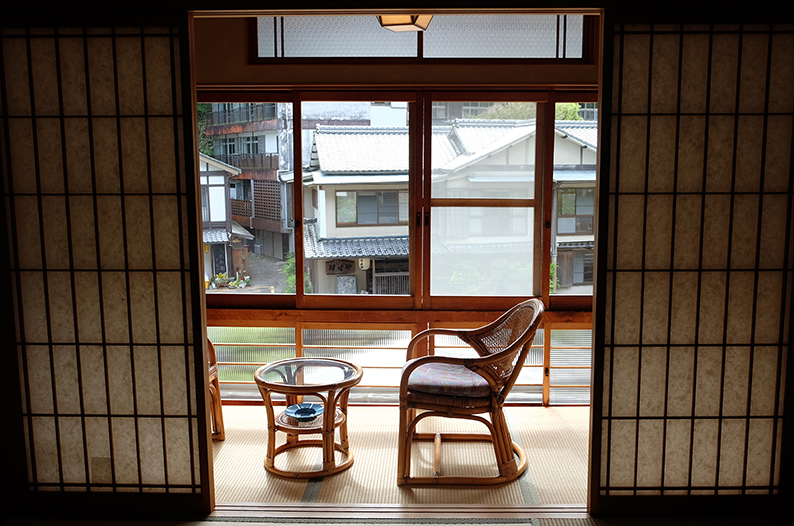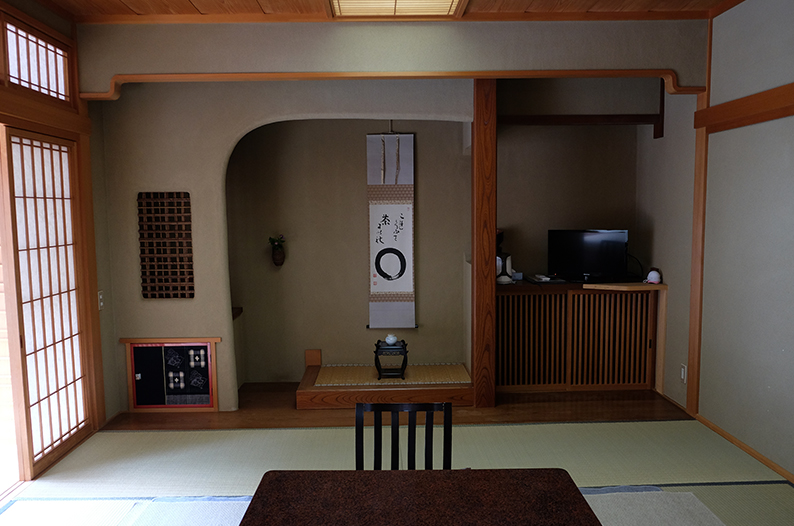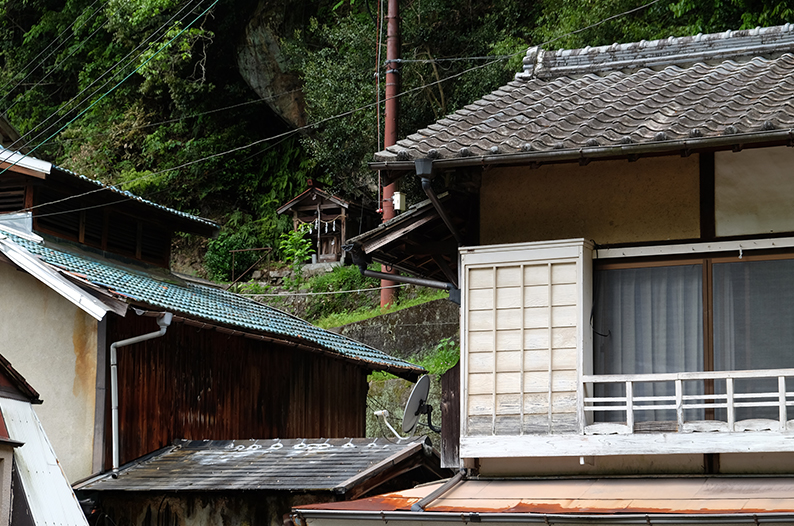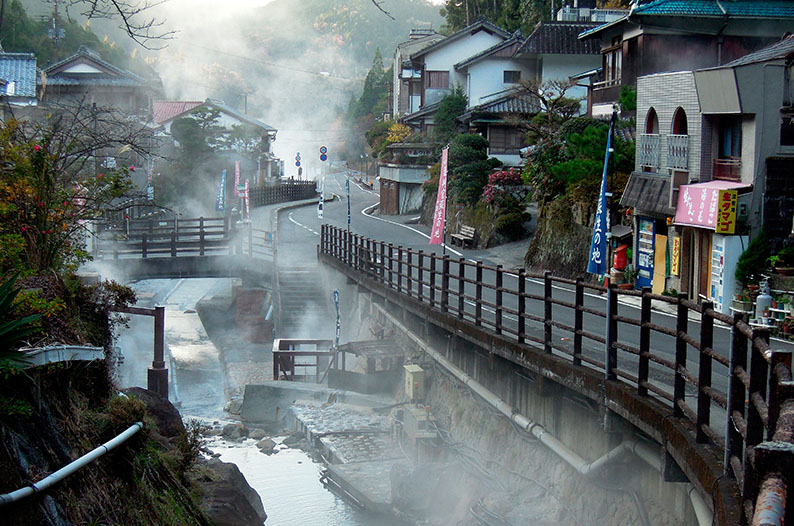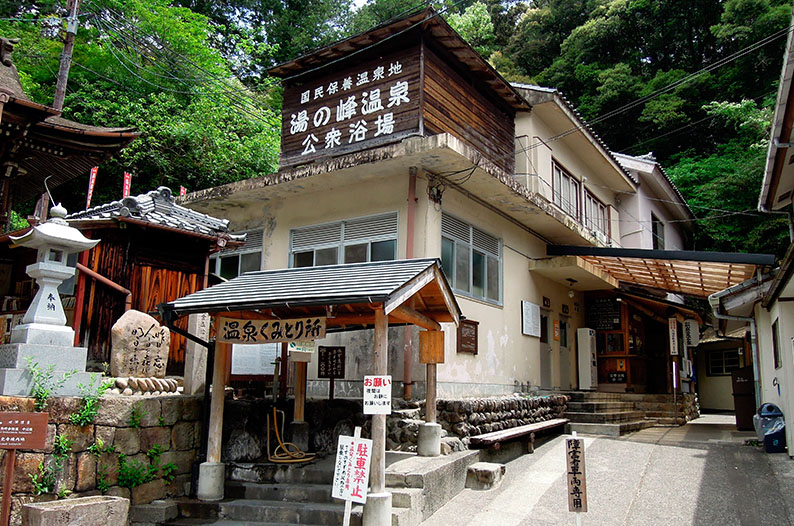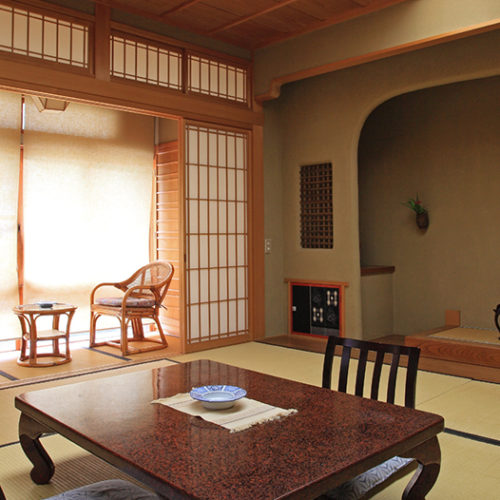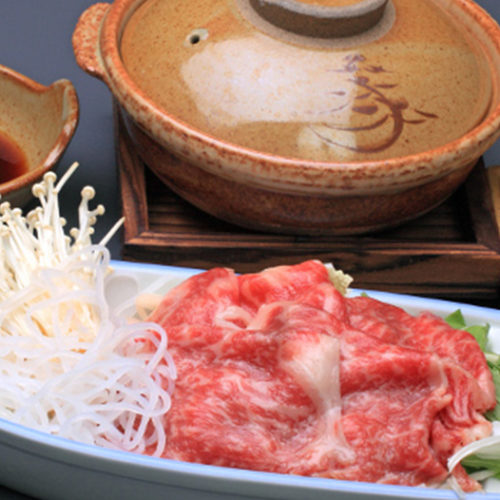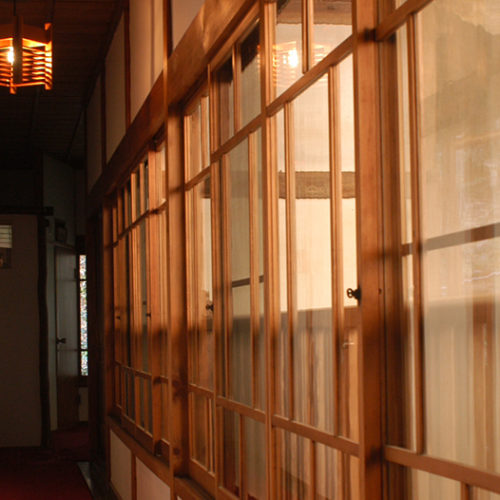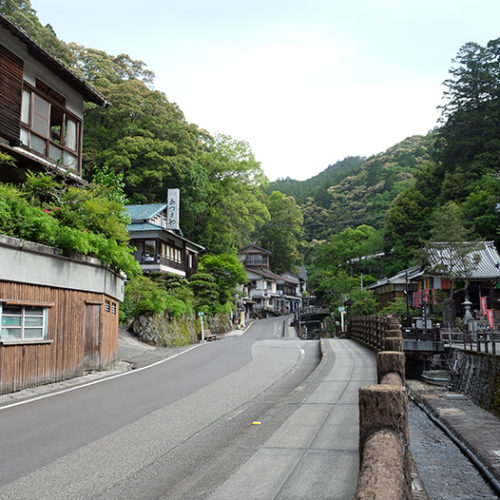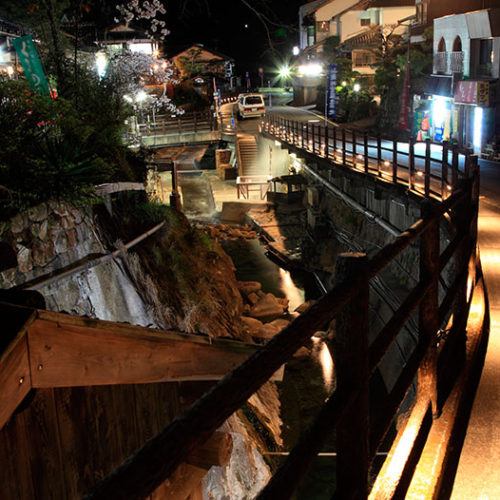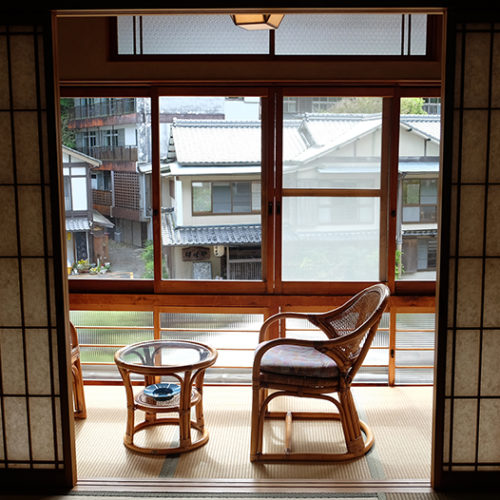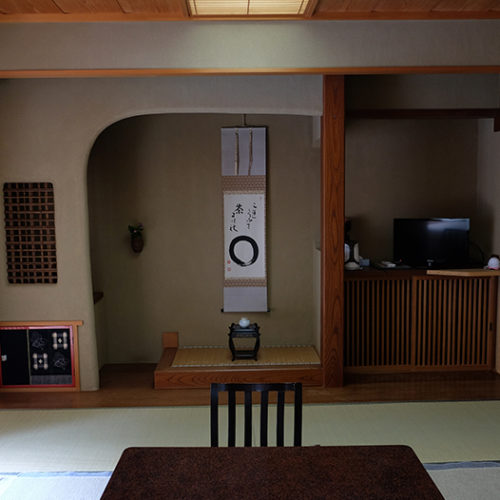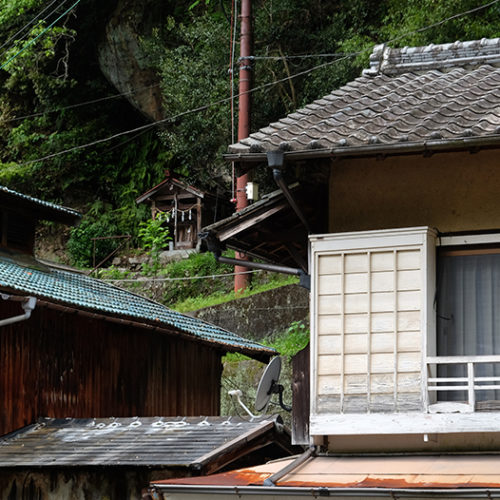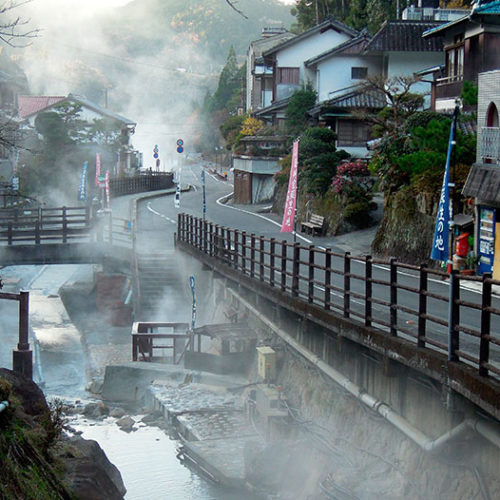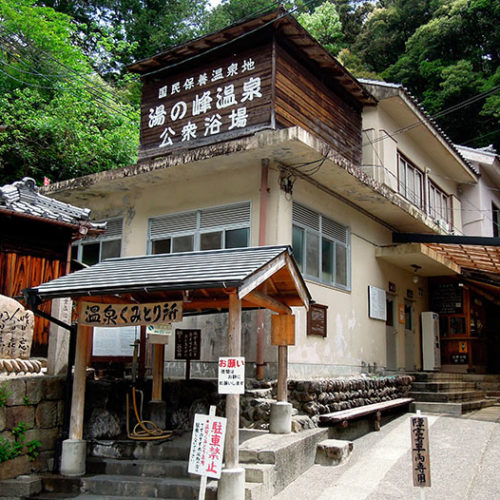Azumaya
Its name means gazebo, apropos for a ryokan that offers a chance to unwind in tranquility.
KUMANO
Revel in Japan's Oldest Hot Spring
Wiped out from trekking along the Kumano Kodo Pilgrimage Trail for days, I descend the bus at Yunomine Hot Spring and arrive at Azumaya, a traditional ryokan inn tucked away in the mountains of Kii Peninsula. I’m so exhausted, I can barely remember my name at check-in. But the staff are welcoming and put me at ease, despite my late arrival…and disorientation. On the way up to my room, they point out the onsen (hot spring) baths. My feet don’t feel like they’re mine anymore; they want to go there first! I manage to regain control of them, and stumble the rest of the way to my room.
Delirious, I barely notice the tasteful decoration of my quarters, with its tatami mats, lacquer furniture, sliding paper doors and natural wood pillars. I don’t even bother to unpack. Instead, I grab a yukata robe and wobble down the stairs to the onsen.
As I slide the door open, I breathe in the pungent smell of sulphur mixing with the scent of pine. The bathing area is spacious and the walls are lined with logs. The square bathtub is surrounded by a pine floor embedded with pebbles. After washing away the grime and sweat, I first dip my tired toes, then glide the rest of my body into the silky onsen water. My muscles start to feel lighter. Resting my head on edge of the bath, I gaze up at the high ceiling, suggestive of Azumaya’s rich history.
Discovered in 23 A.D, Yunomine Onsen is said to be the oldest hot spring town in Japan. Offering respite for over a millennium to tired pilgrims on their way to the Kumano Grand Shrines, it’s the only hot spring in Japan that’s a World Heritage Site. Tamaki-san, the owner of Azumaya, confesses he’s not sure whether he represents the 8th or 9th generation of innkeepers. But he does know the inn’s original Tamaki-san was a renowned Shinto priest and doctor who established Azumaya in the latter half of the Edo period (1603-1868) in order to study the medicinal properties of hot spring water. Centuries later, the Empress and Crown Prince stayed here during their visit to the Kumano Grand Shrines. So I’m bathing in the same water as royalty!
The outdoor bath is a charming fusion of nature and architecture. Designed by a Kyoto University professor specializing in Japanese gardens, it feels like an extension of the scenery I’ve been trekking through for the last few days. Surrounded by precisely placed boulders and pine trees trimmed to perfection, I look up at the evening’s first stars, and delight in the Japanese culture of hot springs.
Back in my room, I notice three things: my feet are mine again, my skin is as smooth as a baby’s bum, and the core of my body is toasty-warm. As I mull over the primary component of Azumaya’s onsen water (could it be…magic?), dinner is served.
Yunomine locals have a tradition of boiling food in onsen water. Dinner at Azumaya is no exception; the Mikumano beef shabu shabu, the chawan-mushi (a savory steamed custard), the rice, the vegetables…everything is prepared with fresh hot spring water. At Azumaya, guests can be treated to it, on the inside and out. What more could I ask?
Being the onsen-buff that I am, I go for another dip after dinner. There’s a bath I haven’t indulged in yet: the samashiyu. The water in this “cooled bath” isn’t diluted, as it usually is elsewhere. Ninety-two degrees Celsius at the source, the spring water is naturally cooled to the ideal temperature. This ensures bathers receive maximal beneficial effects, which accounts for Azumaya’s solid reputation among onsen aficionados.
But wait, we can’t forget the mushiburo, a steam bath created by running hot spring water under the floorboards. Here, guests can absorb the medicinal properties of the onsen water by breathing it in. Surprisingly, mushiburos that use onsen water directly from the source are hard to come by. I’ve done my homework, and I know exactly how lucky I am.
I wake up fresh as a peach. Every single one of the twenty kilometers I walked the day before has been erased. Before breakfast, I absorb the soft morning light in the outdoor bath. Heaven on Earth. For breakfast, I’m served rice porridge, tofu and coffee made with – you guessed it!
Historic Azumaya continues to play a distinguished role in this region. Pilgrims of yore would cleanse themselves here before entering the sacred grounds of the Grand Shrines. Today, the first onsen water drawn on New Year’s Day is offered to the deities. Not only is Azumaya fit for royalty, it’s appreciated by the divine.
by Maho Harada
December 05, 2016
Azumaya information
| Number of rooms | 22 |
|---|---|
| Internet | wi-fi available at lobby |
| Credit card | ok |
| Check in/out | in 2:00pm out 10:00am |
| Language | English available |
| Tattoos | Not allowed in onsen |
| Price range |
Additional Information about Azumaya
Vegetarian option available as much as possible
Recommended restaurants
Shizen Mukuan (Traditional Japanese) - 2-16-30, Takao, Tanabe-shi, Wakayama - 0739-26-5600
Chikatsuyu-tei (Ramen, Udon) - 1810-1, Kodouarukinosato-Chikatsuyu, Tanabe-shi, Wakayama - 0739-65-0707
Kawayoshi (Eel) - 1946-4, Nishimuro-gun, Kamitonda-cho, Ichinose, Wakayama - 0739-48-0531
Eve Farm (Tonkatsu Fried Pork) - 2744-58, Shinjyo-cho, Tanabe-shi, Wakayama-ken - 0739-26-3008
Hiro (Japanese pan cake) - 14-8, Egawa, Tanabe-shi, Wakayama - 0739-26-5073
- TOPSTAYAzumaya
- TOPDESTINATIONSKUMANOAzumaya
